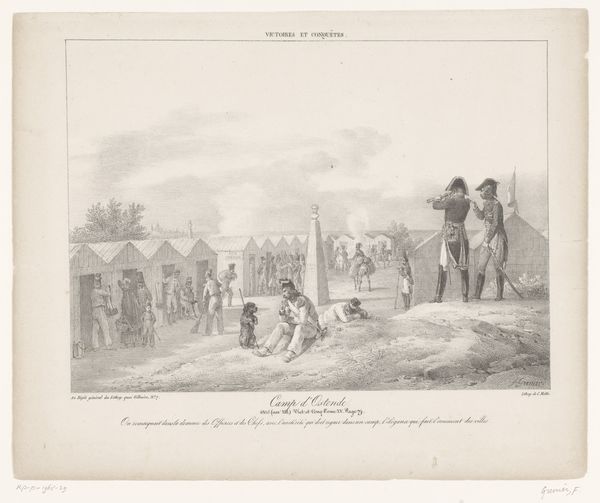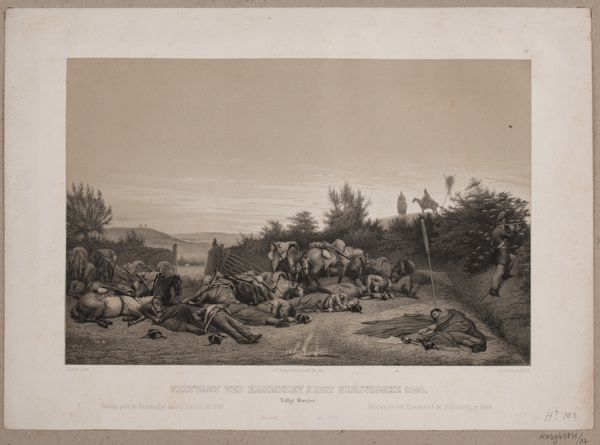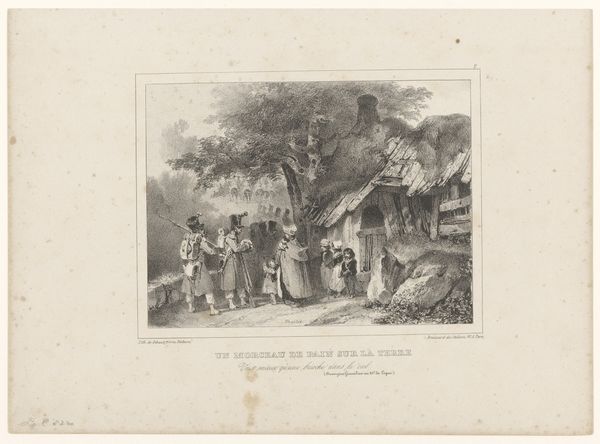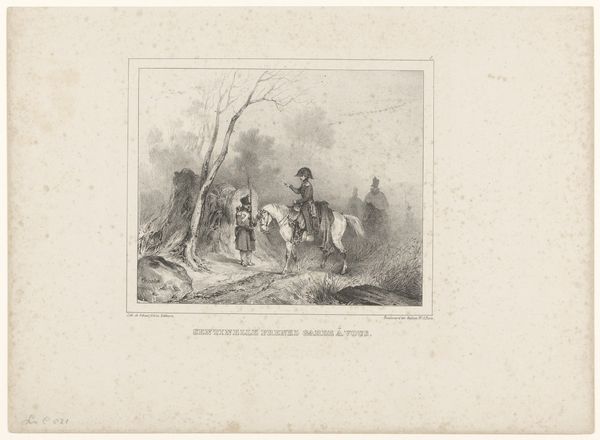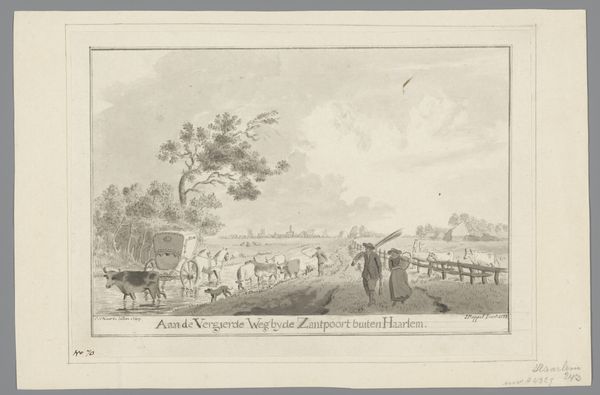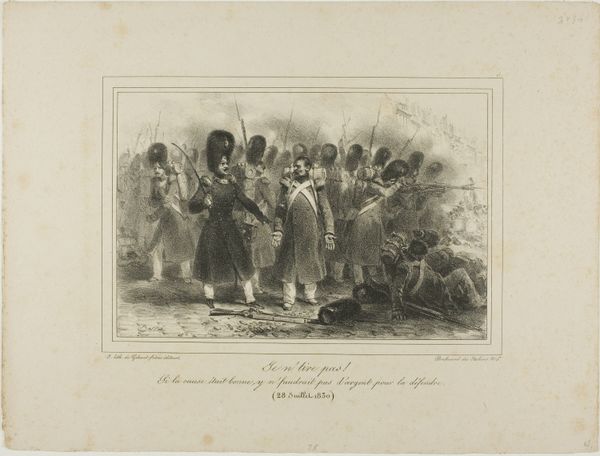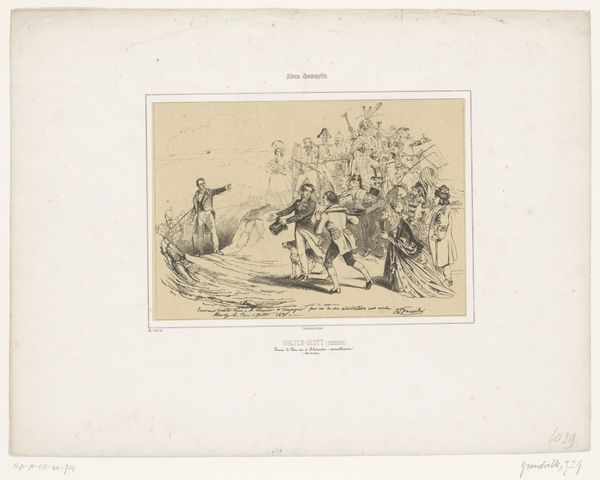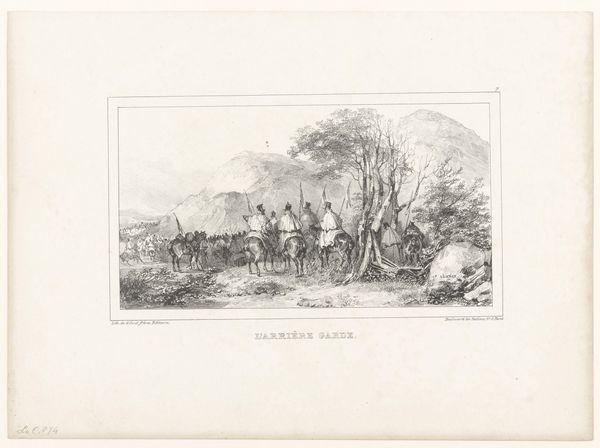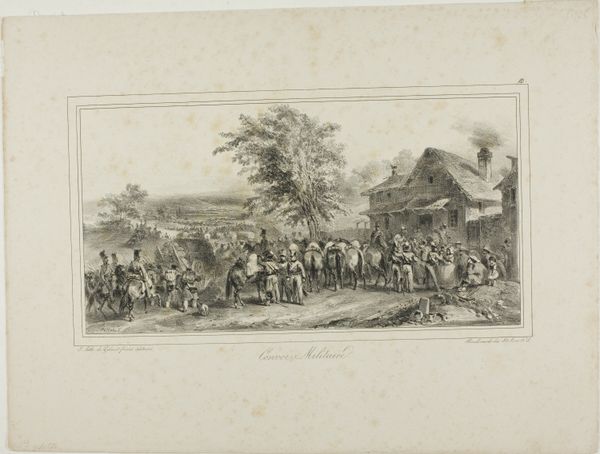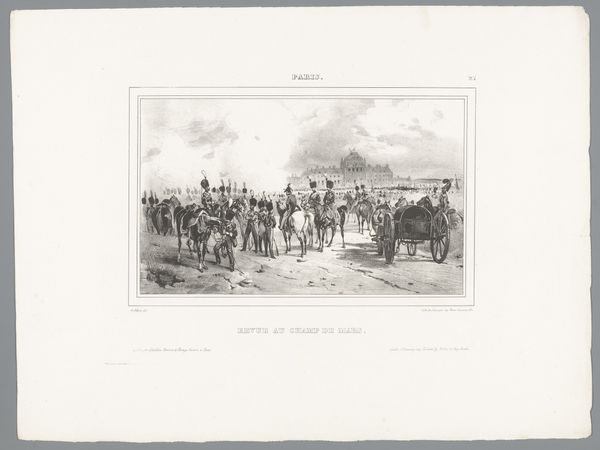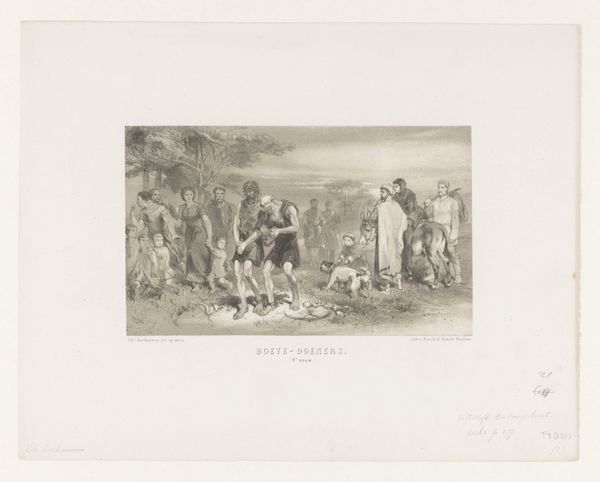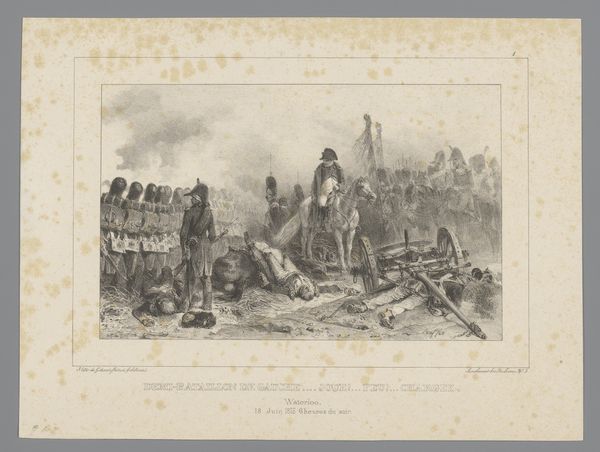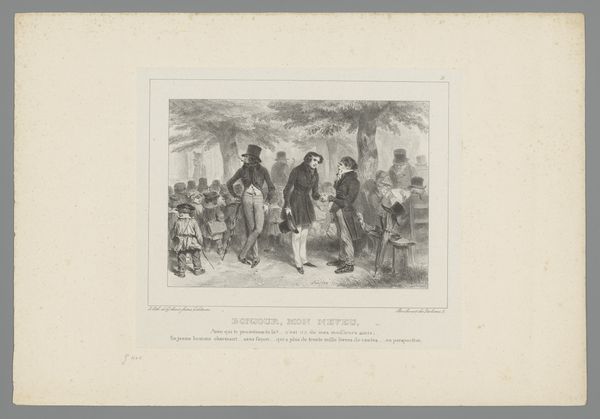
drawing, lithograph, print, paper
#
drawing
#
lithograph
# print
#
pencil sketch
#
landscape
#
paper
#
romanticism
#
genre-painting
#
history-painting
Dimensions: height 347 mm, width 521 mm
Copyright: Rijks Museum: Open Domain
Curator: Welcome. We're looking at "Russian Soldiers Resting by the Roadside," created around 1840 by Auguste Raffet. It's currently held here at the Rijksmuseum. The piece appears to be a lithograph, capturing a momentary pause in what I imagine was a longer journey for these soldiers. Editor: My first impression is weariness. There's a quiet stillness to the composition. You see these men sprawled out, some leaning against artillery, and they appear absolutely drained. The grayscale palette certainly emphasizes the austerity. Curator: Indeed, Raffet masterfully captured the human side of military life, something that Romanticism helped popularize. Rather than glorifying combat, the focus is on the ordinary moments, the toll taken on these individuals by service to a political structure, likely that of the Tsar. These were more and more popular scenes back then. Editor: And I think the lithographic process underscores that sentiment. It’s a method of printmaking inherently linked to reproducibility and accessibility. The use of stone, grease, and acid betrays an ease of duplication for a wide audience, suggesting a deliberate intention to disseminate a perspective of the military that went beyond the official, and often propagandistic, narratives that came from the state itself. Curator: Interesting point. Raffet was quite astute politically. Lithography in 19th century France wasn't just a means of reproduction, it was a political tool. Images could be rapidly produced and distributed, shaping public perception of military campaigns and political figures, a key medium that helped inform public debate and dissent during times of political instability. Editor: The roughness of the sketched style reinforces that. It doesn’t hide the hand of the artist, unlike more polished or academic styles would. And think of the physicality required. Hauling a lithographic stone and creating art with the immediacy of the world, like being on-site while it happened! Curator: Considering the context of 19th-century Russia, this image speaks volumes. While presented as a seemingly innocent scene of rest, the weariness and quiet tension hinted within could serve as a subtle critique of military life. Editor: Absolutely. Analyzing its production, materials, and purpose makes it much richer than just a depiction of soldiers at rest. Curator: Well, that’s a perspective shift I can embrace! Editor: It all begins and ends with process.
Comments
No comments
Be the first to comment and join the conversation on the ultimate creative platform.
